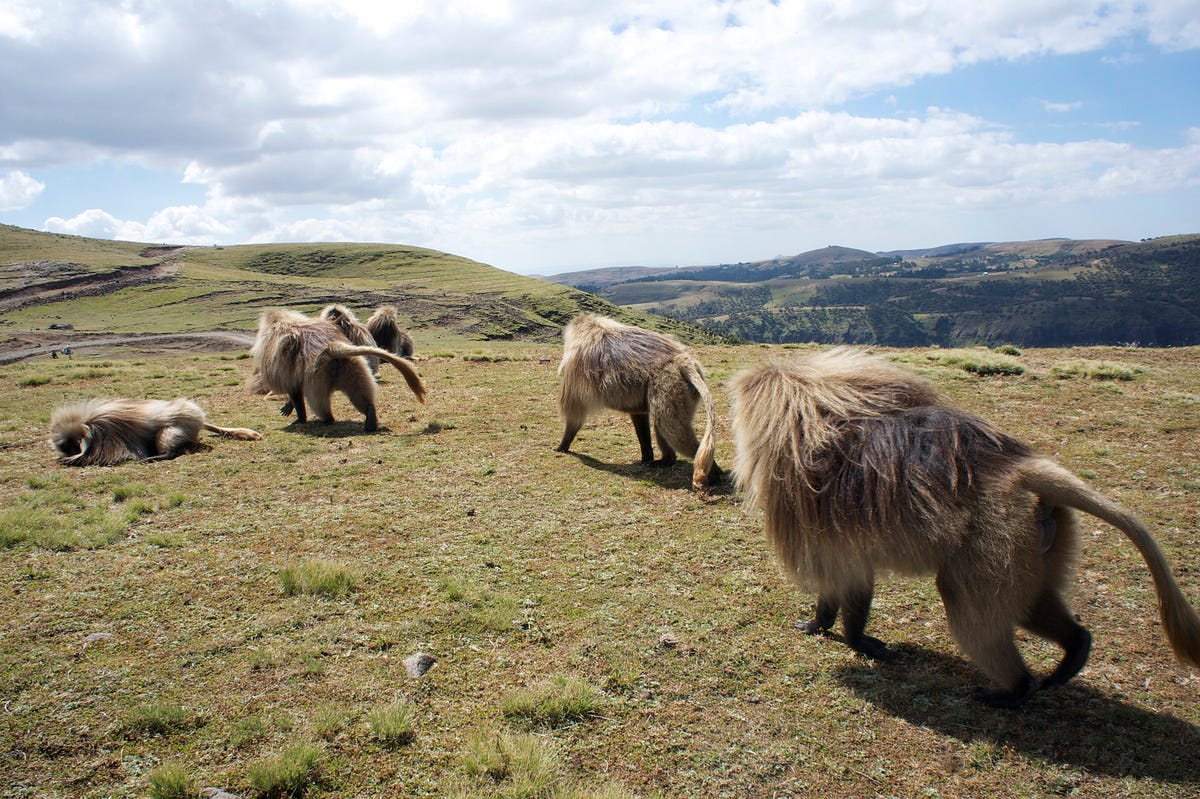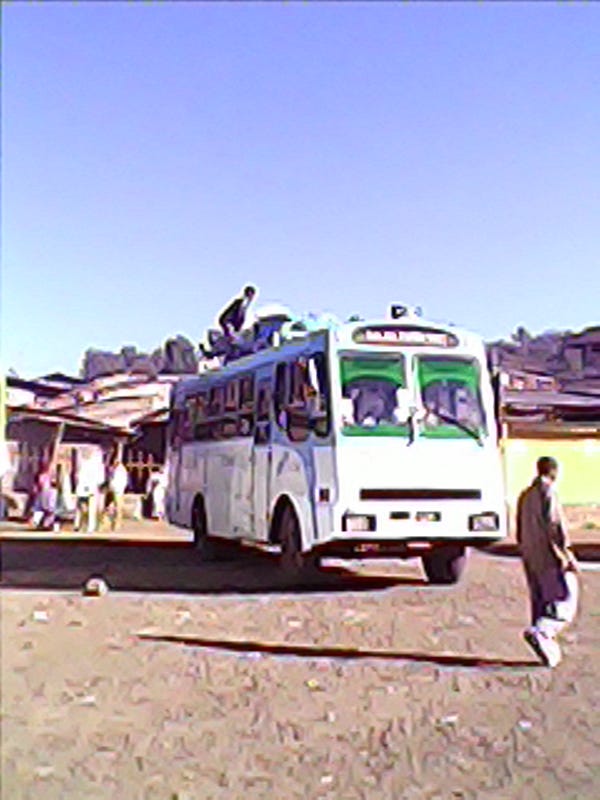He's back! After writing about Berlin in November 2013, Calum has returned! Only this time, we find him in Africa, exploring the magical beauty of Ethiopia; a destination that is growing in popularity as more and more travellers take advantage of the good connections to the country and begin to realise what this fascinating country has to offer!
------------------------------------------------------------
Read any piece
written by travellers to Ethiopia in the past 10 years and your preconceptions
will be blown away. The country is still poor but news pictures from starving
refugee camps are long in the past. Instead think lush green countryside, awe
inspiring landscapes and a country rich in cultural and religious sites. From
rock-hewn churches of Lalibela, to the claimed home of the Ark of the Covenant in Axum, the North offers much for the 21st century traveller, though
infrastructure remains in the early stages and getting around can be hard.
My friend James and
I spent two weeks backpacking around Ethiopia’s Northern circuit taking in
Addis Ababa, Gonder, Axum, Lalibela and the Simien Mountains National Park. It
provided just the inspiration I’d been looking for to offer up another piece of
writing to The Rough Guide to a Lonely Planet. Below is a short snapshot from three days in the middle of
our trip.

The road into Gonder on the day before setting off on our trip (Source - Calum)
“You’re asking us for another $25?”, I said, after a few minutes awkwardness in the van.
“The cost is higher because the others in the group have cancelled.”
I wasn’t enjoying the news. “If the others have cancelled that’s not our problem. We agreed a price and you were happy to take money from us last night. You took on that risk.”
“Well the cost is higher and I need to ask you to pay more.”
“Well, how about we stop the van, cancel the trip and we get out here. You can refund our money and we’ll find someone else to arrange our trek.” I looked at James and he didn’t look pleased either. Neither of us wanted to cancel the trip — we only had two weeks in Ethiopia and it was a struggle to squeeze in a three day trek as things were. We were both not very chuffed with our agent Yegsaw at this point.
“I don’t think you should cancel, but I do think you should maybe consider paying a little more”. Yegsaw seemed slightly less sure of himself now. I told him we wouldn’t be paying any more. At that point he said goodbye and exited the van, leaving us with the driver and Yur Kuk.
We’d had a frosty start to the trip but we were to have some fantastic adventures over the next three days. The scenery was breathtaking throughout; we had lunch by the river whilst families of Gelada baboons crossed in front of us, saw Jinbar waterfall with a 500 metre drop and witnessed the most spectacular views from Imet Gogo at 3926m. Our guide and scout, Mesi and Moulali, looked after us well. It transpired that ‘Yur Kuk’ had actually introduced himself to us as the camp cook. Much to my embarrassment I’d invented him a new Ethiopian name. He was a mysterious character whose real name we weren’t to find out, but he made the most fantastic pancakes and coffee for breakfast and prepared supreme meals each evening when we reached camp.

Gelada baboons walk along the escarpment in Simien Mountains National Park (Source - Calum)
After three days trekking we were picked up and driven out of the park, onward to our hotel in Debark. It was a miracle to have a shower after three days away, but now we had business to attend to — we had to decide what to do about our planned, or possibly not planned, journey the next day.
I began asking around the hotel for information. If Yegsaw hadn’t arranged our transport the next day how would we get to Axum? As always in Ethiopia, things would be slightly complicated.
A bus left Gonder at five-thirty each morning for Shire, passing through Debark sometime between 7 and 9 a.m. This would take us most of the way and from Shire we’d arrange a minibus ride the final two hours to Axum. However, as the bus usually set off full from Gonder we’d be unlikely to get a seat in Debark. To secure a seat we’d have to have someone travel the Gonder-Debark part of the route on our behalf. Our hotelier could call back and arrange for someone to get on the bus there, but on top of the bus ticket this would involve a fee. The arrangement sounded slightly odd but it did correspond with information given in the Lonely Planet guide. I decided this would be a good time to call Yegsaw for a chat.
Yegsaw’s English was good enough for him to have sold us a three day mountain trek but otherwise fairly basic. Unfortunately my Amharic is completely non-existent. I did manage to ask Yegsaw how he was going to deliver our tickets. I expected him to ask us for more cash. Instead he said: “Be at the bus station tomorrow morning at seven, they’ll be there”. There didn’t seem much else we could do.

On the main road through Debark (Source - Calum)
Other than being a place to await onward transport Debark offers little for the traveller. We sat down in the hotel restaurant and ordered ‘Pasta and Meat’ — possibly the least risky looking option on the menu — before heading back to our room. Tomorrow we’d find out whether our bus journey would come through.

Less than ideal surroundings in Debark (Source - Calum)
7 a.m. at Debark bus station is miserable, utterly miserable. James and I arrived with our packs. The hawkers seemed to leave us alone once we confidently told them we already had people looking after us. If only they knew. Debark was a basic town and if the dusty high street full of corrugated iron shacks had little to offer then the bus station had even less. Agents shouted ‘Gonder-Gonder-Gonder-Gonder’ as minivans came and went. Carrion picked on the animal vertebrae on the ground to my left. I didn’t feel hungry at all.
Two hours later the bus finally pulled in, did a turn-around and stopped. The engine kept running — I imagined the driver wouldn’t dare turn it off given how much trouble it might take to restart — and a young boy jumped out the side door to pop a brick chock behind the front wheel. Passengers began getting off to stretch their legs and behold, our man with the tickets was there!

Always tip the man who loads your luggage. You really want it to be strapped on tight! (Source - Calum)
The bus waited in Debark for thirty minutes before setting off. It turned out this would be the only stop. I had no idea how long the trip to Shire would take but I’d read minivans for Axum stopped leaving at five in the afternoon. Driving in the dark is dangerous in Ethiopia and the risk of hitting livestock is high. In addition, many vehicles on the road don’t have or don’t use lights and head-on collisions are commonplace. There’s a much higher likelihood of encountering bandits too. We had no idea how long the journey would take but we were sure we should be there by 2pm. On the map the distance from Debark to Shire looked 100km as the crow flies. Surely it couldn’t be much more than that by road.
Three o’clock and still Shire was nowhere in sight. We’d approach villages, “this must be it, it must be”, I’d say, but no, the bus would carry on through. Checkpoints seemed to be becoming more frequent. Police officers would stop the bus, get on and check everyone’s identity cards. A few times they made us all get off and stand outside though I’ve no idea why. An hour later we began entering a much larger town than the rest. ‘This must be it, this really must be it.” Inda Aba Guna the sign said. There was still another 20km to go.

From left: James, Mesi, Moulali and myself (Source - Calum)
Taking the harder road often offers the richest rewards. It’s two months since I arrived back in the UK yet I’m still continually reminded of contrasts between Ethiopia and home. Taking a comfortable car journey up the M5, browsing the shelves in the local supermarket or even just being able to flick a light-switch with some confidence the lights will actually come on. Things will become easier as time goes on but I firmly believe the richest possible experience to be had in Ethiopia is now.